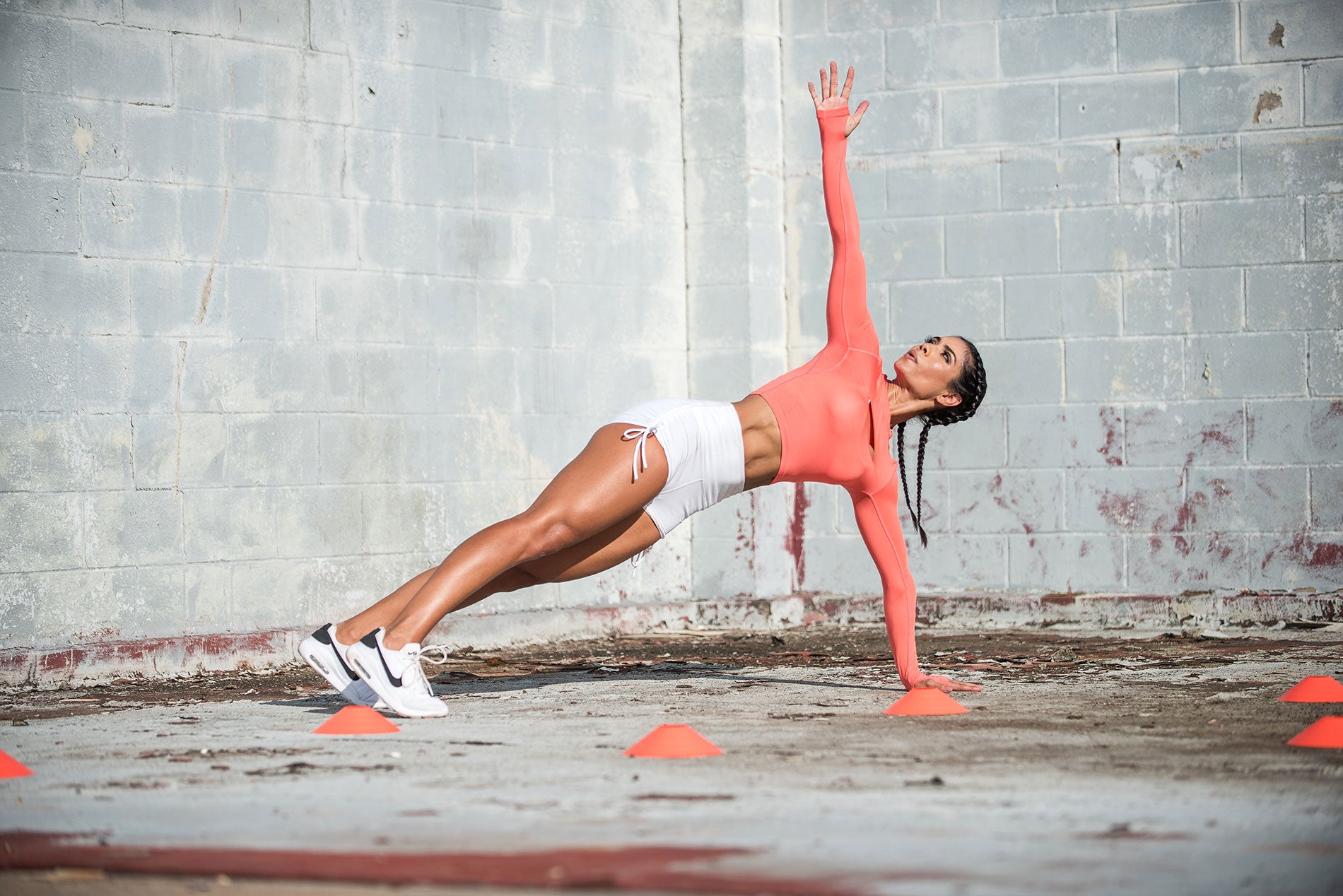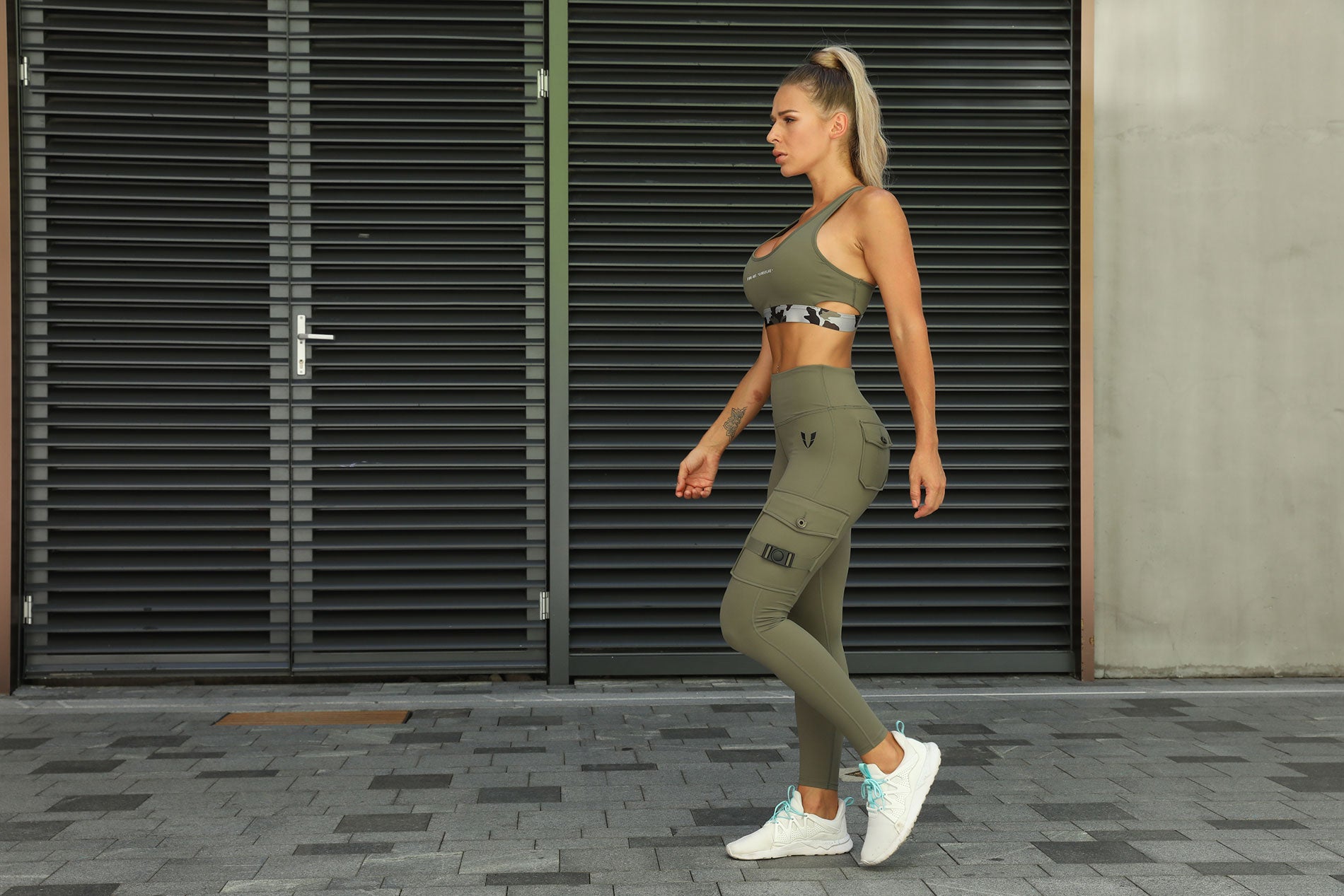
What causes sore muscles?
The post-gym aches are all too familiar to most of us, but what causes sore muscles? And how can we make it go away?
Muscle growth is all about the process of healing. When we lift weights, our muscles incur microscopic damage in their fibers and connective tissue, making them fatigued and sore.
From there, the healing process takes effect when specialized cells (called satellite cells) begin fusing together and attach to the damaged tissue. The satellite cells fuse with muscle fibers, increasing cross-section thickness, and eventually transitioning into new protein strands. Components of the cells are then used to create additional strands as well. These strands increase both the size and strength of muscle fibers, which result in the increase of muscle mass when you lift regularly. The resting period after a workout is vital at this stage – the healing process needs to take effect when you aren’t lifting weights or extensively using your muscles. Women's waistline training is a good example.
Soreness
It was once believed that the soreness you feel (aka delayed onset muscle soreness, or DOMS) 24 to 72 hours or more after a workout was a build-up of lactic acid, which muscles produce as they use energy. But instead, it is now believed to be a direct result of the muscle tearing. When DOMS disappears, it usually means that the muscles have healed. But you don’t have to wait until then to continue with an exercise – as long as you don’t over-exercise or over-stimulate your body.
That’s not to issue a license to kick back in a hammock with a margarita and a serve of nachos. Even though it takes between a few days and a week for your muscles to recover from a workout, there is no set amount of days that we are recommended to rest. The best option is to listen to your body – it’s not wise to work out extensively on a set of sore muscles because that is what leads to larger muscle tears. Taking it slow and eating the right foods to aid recovery is key. Recognize the difference between pain and soreness, and if you feel chronic muscle or joint soreness along with impaired physical performance, you need to slow down and rest easy.
“DOMS can typically last anywhere from 24 to 72 hours and occur within the first 24 hours post-training. Therefore it is advised to have 24 to 48 hours rest between heavy strength training to allow your muscles to recover properly before overloading them again. At the same time, in the next exercise, you should wear slightly oppressive and elastic fitness clothes; such as FIRM ABS Gym Wear; their technology can make you enjoy the workout more and protect your muscles.” says exercise physiologist and head of fitness at Fitness First Bill Pellow.

Recovery
“Recovery is one of the most important components of any good training program and the amount and timing of recovery should be integrated into your program based on the type and frequency of exercise you are doing,” says Hale. “Serious strength training designed for changes to your muscle mass, tone and strength should overload your muscular system enough that you experience some soreness in the muscles you targeted.”
Generally, the older you are, the less time you need to heal as the body is most likely in its most comfortable form in the later stages of life. Healing and growth are most successful with rest after eating a meal of carbohydrates, protein, and fat immediately after a workout. Protein provides the raw material that can be used to complete the healing process.
“On completion of my workout, I am sweaty and exhausted. My body is in overdrive begging for nutrients to repair and recover with so they can be bigger and stronger tomorrow. I always have a good- quality whey protein shake on the ready as it is fast-digesting, making for the quick delivery to my exhausted healing muscles. If I have the time to sit down and eat a small meal immediately (within 20 minutes), I will ensure my meal contains a good source of fast-digesting carbs and protein,” says Steinert.
“I want carbs in this meal as not only will it help to increase my energy levels but they will be used to help better the efficiency of getting protein to my tired and damaged muscles rather than be stored as fat. We must remember that when we lift weights we are breaking muscle fibers, so we need to ensure they repair optimally for stronger regrowth, which means stronger and more toned muscles.”
Experience it for yourself…
Do a split-training program where you train a different muscle group on different days to speed recovery. Follow a five-day schedule that mirrors a pattern such as legs and abs on day 1, chest on day 2, back and abs on day 3, rest on day 4 and shoulder and abs on day 5.
For diet, Steinert recommends post-workout meals that have 150 g sweet potato with 300 g cottage cheese, one chicken breast with 125 g sweet potato, or 1.5 bananas with 2 tablespoons of peanut butter.



Hinterlasse einen Kommentar
Diese Website ist durch hCaptcha geschützt und es gelten die allgemeinen Geschäftsbedingungen und Datenschutzbestimmungen von hCaptcha.